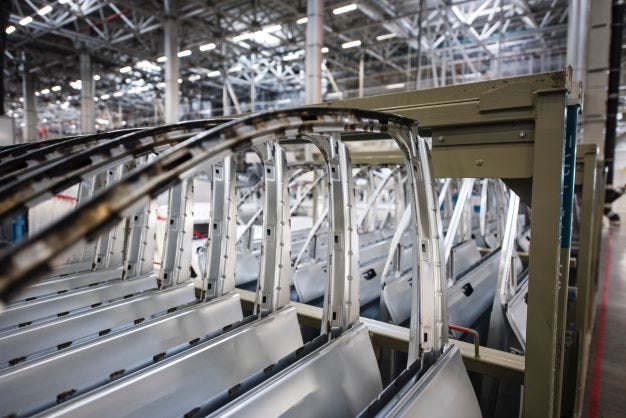Breaking Down Silos for Digital Transformation Success
It’s important to evaluate what existing technology is working, and what’s needed from a people and process standpoint, and only then do you think about deploying a new technology. It’s important to really leverage what you have.
October 25, 2022

When I think of the critical factors for successfully deploying advanced analytics, it can be broken down into three core processes: visibility, capability and resilience. Visibility is seeing what’s happening and where it’s happening. Capability is how the technology can react and take action after we see what’s happening. Resilience is how we sustain the capability through challenges.
That said, it’s never just about the technology. No matter what platform you put in, it is not going to solve all of your problems if you have inefficient processes and people with inadequate training and skill sets. This is what we mean when we talk about digital transformation – it’s an approach that has to take place.
Leaders should focus not just on finding the right technology solution to run their business but also ask themselves hard questions: Do I need new skill sets on the team? Do I have the people on my team who know how to put processes into place? For companies that are successful in a digital transformation, it comes down to their ability to accept change and make sure that it’s being communicated clearly. A lot of times companies in firefighting will under-invest in the change management piece that is critical.

Lebovitz IV main art 3
Having spent the last thirty years with one foot in supply-chain manufacturing and the other on the technology side, I’ve found it’s important to evaluate what existing technology is working, and what’s needed from a people and process standpoint, and only then do you think about deploying a new technology. It’s important to really leverage what you have.
Once you understand what tools you have, how they work and the current gaps, you can then begin to explore what technology might exist to bridge those gaps.
For example, ERP (Enterprise Resource Planning) systems are very good at aggregating and storing master data for planning purposes, but daily supply-chain execution is still very siloed. So, a production or a line planner is often working on different priorities and has non-standard workflows compared with the buyer and a supplier – even though they may be working with a common set of data. The way in which they use that data tends to involve a lot of local decision-making based on different workflows and very manual processes. So, this local decision-making and disconnected prioritization at each stage of the supply chain is one of the drivers of the bullwhip effect that many of us hear about today.
The key is to leverage technology to establish visibility into the priorities that matter for execution and also leverage technology to enable collaboration throughout the supply chain. Production means working hard day-to-day to try to meet customer delivery needs. We need to get the planners, buyers and suppliers to be aligned on the right supply-chain priorities.

Lebovitz IV main art 4
The good thing about digital transformation is it doesn’t necessarily mean rebuilding the entire technology stack from scratch; rather, it can mean thinking about how we leverage data and harness better insights from these existing systems to drive better results. At the end of the day, we’re trying to make the work easier for people. If we can do that, our teams will be happier, more efficient, more productive, and do higher quality work. The best way to get people to adopt change and successfully drive digital transformation is by providing them with the tools that make their work easier. If we do that, people see more success and we get better stickiness and results.
If the processes are immature, then companies are not going to get the most out of the technology – there’s no single part of the process that really needs to be fixed, no single technology. It’s the interaction between many of these different areas that tend to be siloed today.
While many manufacturers want to implement things such as predictive intelligence, advanced analytics, machine learning, or AI as part of their digital transformation strategies, a lot of basic issues are holding them back. For example, they’re relying heavily on manual processes such as static spreadsheets with point-in-time data that’s not giving a real-time view. Many enterprise systems are disparate and disconnected so they don’t provide the data and visibility needed to make decisions and correctly implement any of these processes or technology fully.
Manufacturing executives need to understand that they’re managing a system, not just a function. The system extends outside of their four walls; it includes their suppliers and their customers. Having visibility into the full ecosystem is important when a decision made in one part of the system will have an impact somewhere else.

Lebovitz IV main art-carlos-aranda_0
We still need to continue to educate leaders and managers on systems thinking relative to end-to-end thinking inside our businesses. Leveraging best-of-breed technology platforms will take us there. For teams to succeed, there has to be trust. We have to trust our partners, share information with them and ask them to trust us with their data for the technology to be effective.
To achieve breakthrough improvements, the first step is to truly understand the problems. By spending a lot more time understanding the problems and what’s causing them, the actual solution can come much quicker. When I look at the challenges that we’re talking about now with shortages and inventory optimization, the good thing is that the problem has become clear. We hear about these issues every day, but the challenge right now is that the solution and the optimal strategy most companies should take are not clear.
The reliance on spreadsheets is preventing progress and making it difficult to establish these standardized processes that are more real-time. There's a growing execution gap between the people that are living the problem day-to-day and the technology providers. Are we making their jobs easier? I think this execution gap is preventing progress and causing a lot of these starts and stops when it comes to failed solution implementation.
And when an implementation isn’t working, the people that are tasked with the day-to-day execution will revert back to the spreadsheets they know. The other major challenge blocking improvement is getting accurate information and making it visible. Creating good quality information is not just, “Let's do it and we’re done.” We need to create a systematic way of thinking around supply-chain data and visibility to be able to react better to changes. And some of that has to do with creating shared and synchronized views around information. Ultimately the goal is to leverage technology to complement existing solutions. The hope is that people can use these newer solutions to shift from a reactive firefighting mode to one where they can work more proactively based on prioritized actions, better workflow and more accurate information.

Richard Lebovitz_Headshot (1)
With big implementations, one of the main reasons for struggles with adoption is because of underlying data issues. When data is not clean it becomes a self-perpetuating cycle – people stop using a system because they don’t trust what was coming out of the system and revert back to manual spreadsheets. Then you have a bunch of activity that’s happening in many different silos and that permeates through multiple tiers of the supply chain.I always recommend that companies first clean the data so they can actually trust it and then, as they’re adopting new technology, they will see a new level of insight. It’s a hard effort but important to use these types of projects and implementations to address some of those fundamental issues.
Richard Lebovitz (pictured, above left) is the CEO of LeanDNA, a purpose-built analytics platform for factory inventory optimization.
About the Author(s)
You May Also Like
_(2).jpg?width=700&auto=webp&quality=80&disable=upscale)


